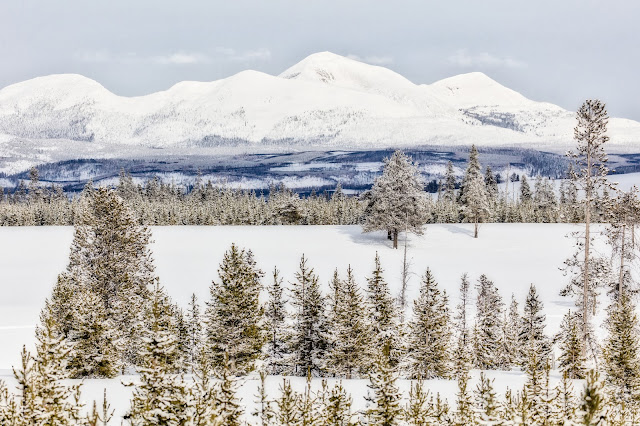Underneath, there are secrets
Kept safe from prying eyes
Held fast and secure
Behind a lame disguise
Would they think less of me
If everything was shown
I wonder, would their eyes still see
The person they have known
© 2022 Peter Noah Thomas
Photo by Jaroslav Devia
I thought this building looked interesting, so I snapped a pic. Only later, when I looked at it, did I see how it blended into the sky. I think it's pretty cool! =]:)
Fall has...fallen?
In Yellowstone National Park, Mount Holmes is a significant mountain peak. It is the highest peak in the Gallatin Range's Wyoming section. In the park's northwest corner, Mount Holmes is the southernmost point of the Gallatin Range. It is the source of Indian Creek, a Gardner River tributary.
Before it burned down by a bolt of lightning, there was a historic fire watchtower near the top of Mount Holmes.
Captain William F. Raynolds depicted this peak as Mount Gallatin on an 1860 map. Because of its proximity to the Madison River, the summit was commonly referred to as Mount Madison before 1878. The third Hayden Geologic Survey, led by Henry Gannett and geologist William H. Holmes, ascended the mountain in 1878. The summit was given the name Mount Holmes by Gannett.
The Mount Holmes-Winter Creek trail, which is 10.8 miles (17.4 kilometers) long, leads to the peak of Mount Holmes. On the Mammoth-Norris stretch of the Grand Loop Road, the trailhead lies near Apollinaris Spring. =]:)
Abiathar Summit is a mountain peak in Yellowstone National Park's northeastern part, in the Absaroka Range of Wyoming, elevation 10,928 feet (3,331 m). Members of the Hague Geological Survey named the mountain after Charles Abiathar White, a geologist, and paleontologist who worked on early western geological surveys. Yellowstone was unfortunately never visited by Mr. White. =]:)
Rime ice forms when supercooled water liquid droplets freeze onto surfaces. Meteorologists distinguish between three basic types of ice forming on vertical and horizontal surfaces by deposition of supercooled water droplets. There are also intermediate formations.
- Soft rime is less dense than hard rime and is milky and crystalline, like sugar. Soft rime appears similar to hoar frost.
- Hard rime is somewhat less milky, especially if it is not heavy.
- Clear ice is transparent and homogeneous and resembles ice-cube ice in appearance. Its amorphous, dense structure helps it cling tenaciously to any surface it forms on.
Both rime types are less dense than clear ice and cling less tenaciously; therefore, damage due to rime is generally minor compared to clear ice. Glaze ice is similar in appearance to clear ice, but it results from a completely different process, occurring during freezing rain or drizzle.
No matter what you call it, it's still cold! =]:)







.jpg)


















